How does the INFP personality fit into the Big Five personality traits?
Reading time: 5 minutes

Gregory Park, Ph.D.
Author
In personality studies, scientific researchers often use a trait-based approach to describing the differences between people instead of using personality types. The most well-established method is the Big Five, which describes differences along five broad dimensions:
Personality types are far less precise than getting exact Big Five measurements, but knowing your personality type can give you a rough idea of where you fall on each dimension.
In the graph below, each dot is an INFP, placed by where they fall on each of the Big Five dimensions. You can see that INFPs can vary quite a bit on any single dimension.
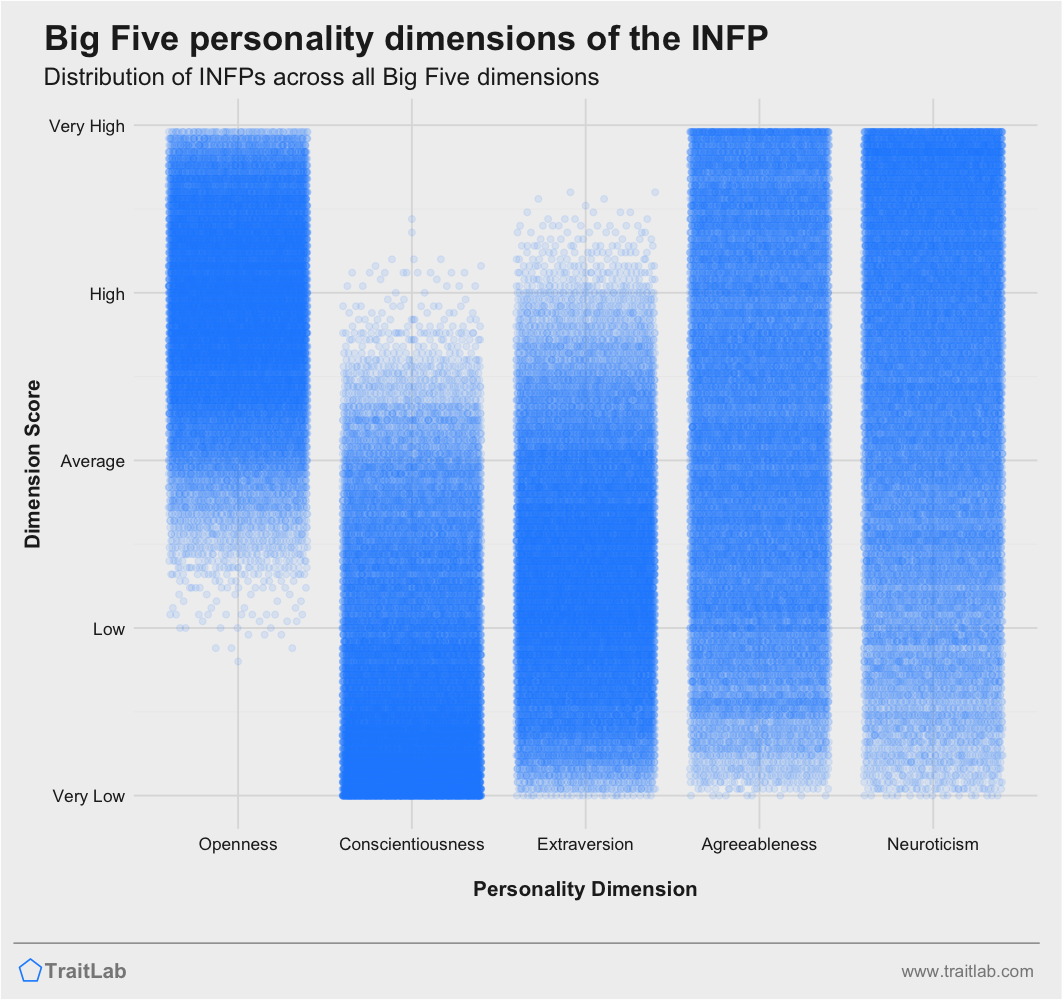
For example, some INFPs fall near the top of the Openness dimension, while others fall closer to the middle or average. However, very few INFPs fall below the average on Openness. So, we can be reasonably confident that an INFP will be average or higher than average on Openness, and an INFP is unlikely to be lower than average on Openness.
Using the same principles, we can profile the INFP personality type across every Big Five dimension.
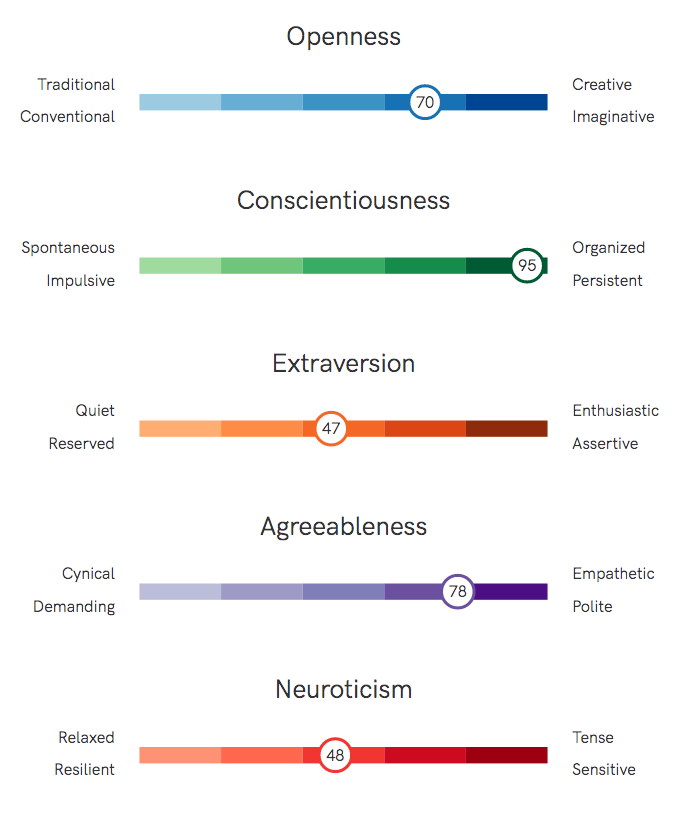
Do you know your Big Five?
Learn about your personality traits and so much more with TraitLab's comprehensive assessment.
INFPs are often highly open to experience.
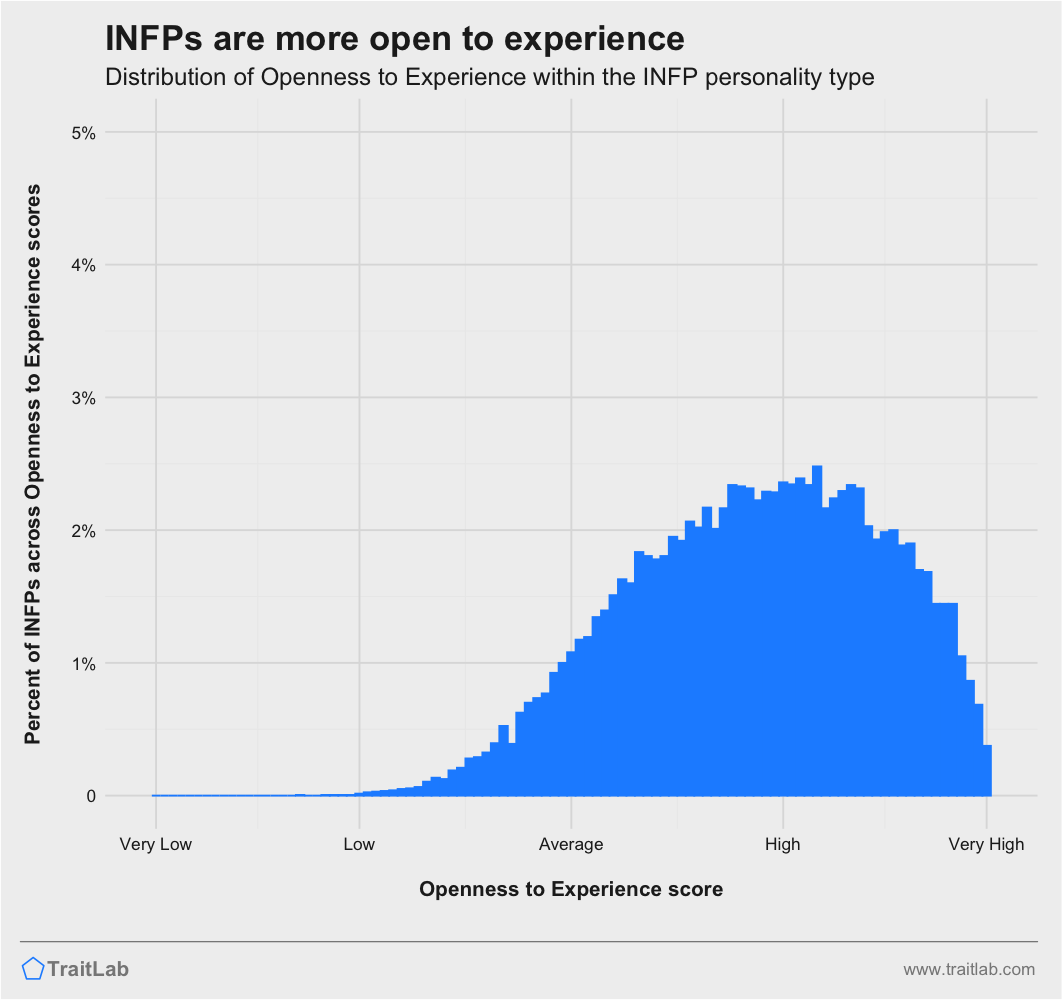
As a group, INFPs stand out in their unusually high Openness to Experience. High Openness to Experience is related to strong need and preference for novelty across all types of experiences.
Like many INFPs, highly open people tend to have diverse tastes in food, music, art, and literature, are intellectually curious, and often embrace unconventional habits, ideas, or beliefs.
INFPs tend to be less conscientious.
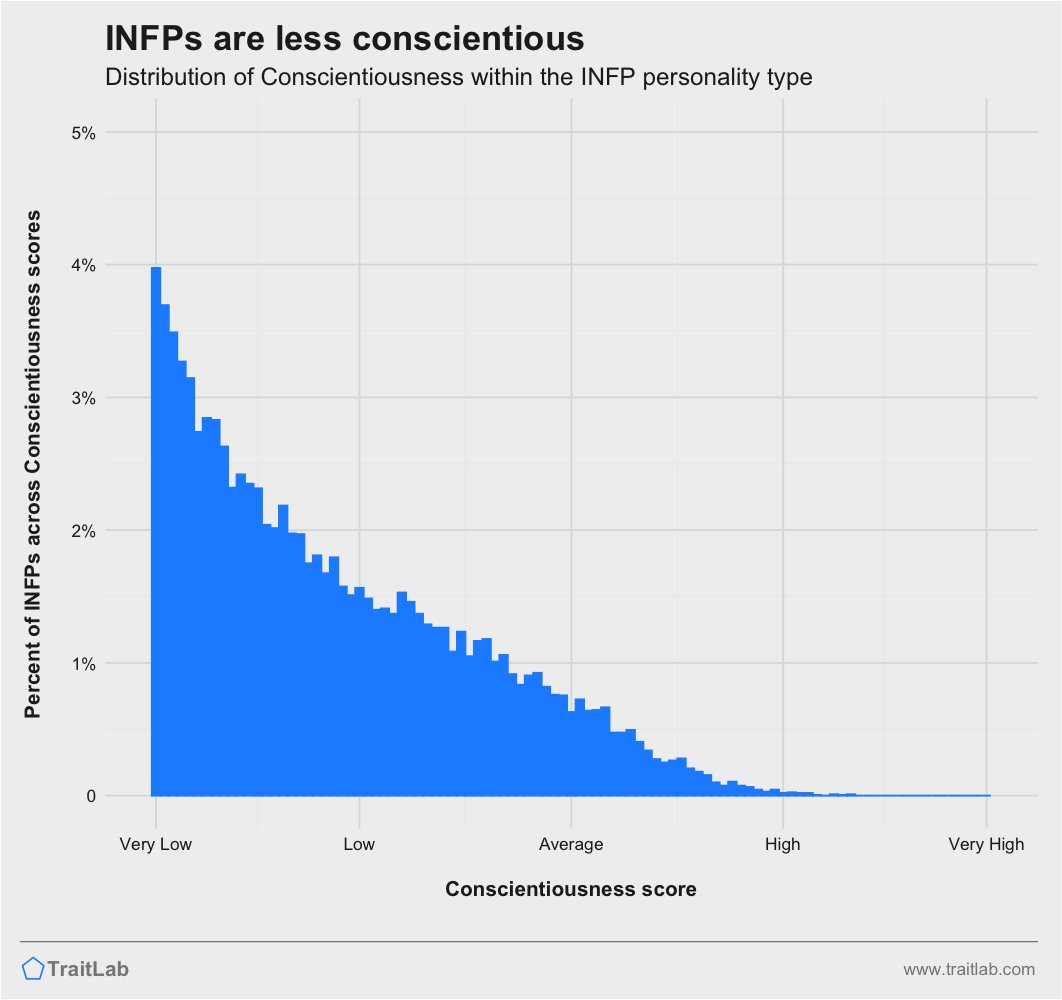
Conscientiousness describes one’s tendency to make detailed plans, be highly organized and systematic, and follow consistent, regular schedules.
The relatively low conscientiousness of INFPs’ means that they more readily accept chaos and irregularity, and may actively avoid what they perceive as being too organized or systematic.
INFPs are less likely to be highly focused and dedicated to a single long-term goal. Instead, they tend to act more impulsively, happily bounce between smaller, short-term projects and goals.
Lastly, INFPs will feel less obligated to carefully follow widely accepted social norms, rules, and regulations in several areas of life. They may opt for an unconventional or even rebellious approach.
While INFPs tend to be more introverted, they are the least introverted of all of the Introverted personality types.
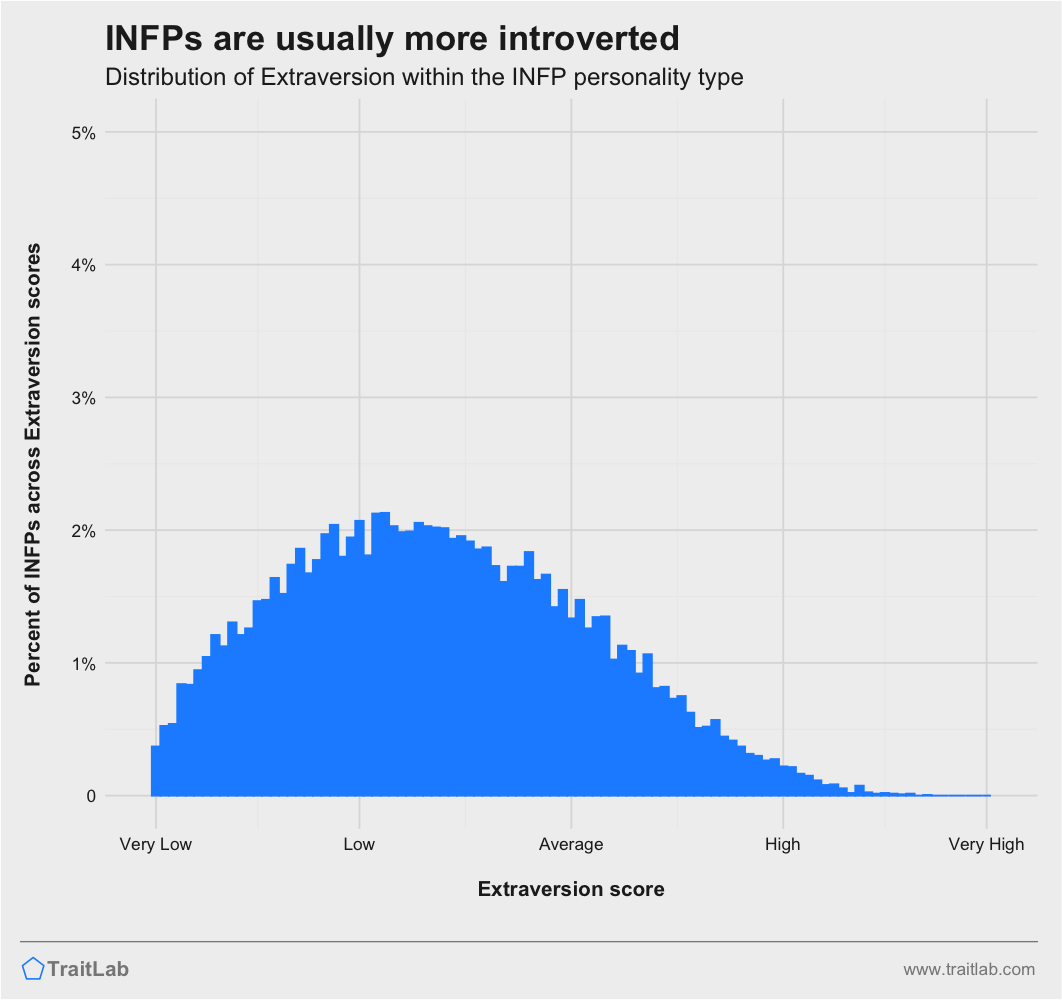
Many INFPs fall just below average on Big Five Extraversion, which describes tendencies around social engagement and experiences and expressions of positive emotions.
More introverted INFPs may prefer to spend time engaged in more solitary activities or surround themselves with calm, less stimulating environments. Those INFPs who fall closer to the average may more comfortably switch between highly social activities and quiet downtime alone.
The INFPs level of introversion will also be reflected in their patterns of emotional expression. As introversion increases, INFPs may seem stoic and serious, less likely to display a range of positive emotions like joy, laughter, and excitement.
INFPs tend to be highly varied on Agreeableness.
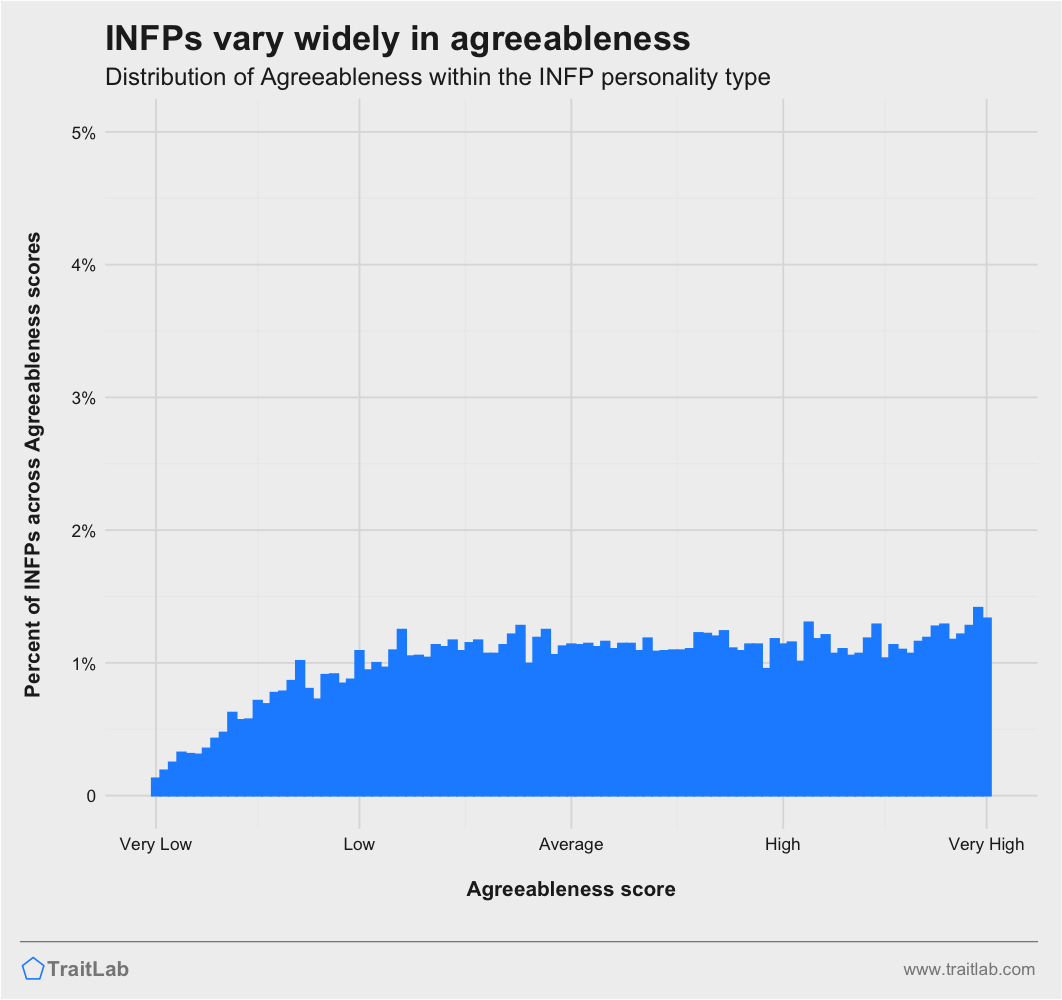
Merely knowing that one is an INFP tells you very little about how agreeable or demanding they are. From the graph above, you can see that INFPs fall evenly along the entire range of Agreeableness, with some at the very low extremes and some at the very high extremes.
More agreeable INFPs will seek to maintain warmer and friendlier relations with other people, from strangers to relatives to close friends. More agreeable people will try to avoid interpersonal conflicts, and will attempt to reduce or resolve disputes as they arise. INFPs with higher agreeableness will also have greater altruistic interests, and may gravitate towards professions or hobbies that involve helping others.
Less agreeable INFPs are more demanding and more comfortable with interpersonal conflicts and disagreement than most. They often find it easier to prioritize their own goals over others’ needs, and more easily voice their criticism and negative feedback to others.
The high variation of Agreeableness in INFPs is an excellent example of the shortcomings of using personality types. If you want to know how agreeable you are, just take TraitLab’s free Big Five test.
Just as with Agreeableness, INFPs are highly varied in their level of Neuroticism or Emotional Stability.
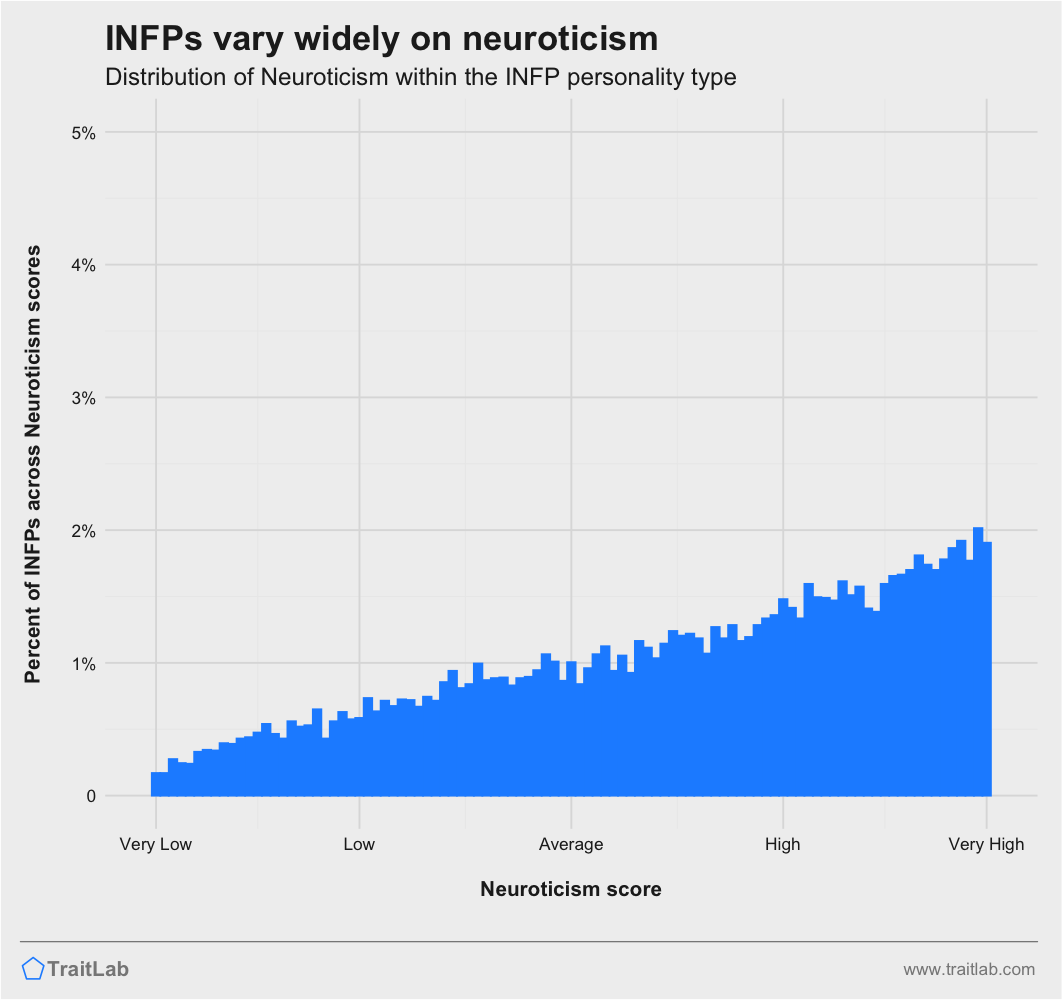
Some INFPs fall on the very low end of Neuroticism, some land on the very high end, and most fall somewhere in between. Knowing that someone is an INFP tells you almost nothing about their relative level of Neuroticism.
Neuroticism describes our emotional volatility and variability. It is closely tied to our tendency to experience negative emotions: anxiety, anger, distress, and depression.
High Neuroticism is related to more frequent and dramatic mood swings and a general tendency to worry more often. More neurotic people are more irritable, have a shorter temper, and are more likely to dwell on negative experiences.
Low Neuroticism, or high Emotional Stability, is related to an overall decreased reactivity to stress, fewer and less intense experiences of negative emotions like anxiety and anger, and a more relaxed and easy-going temperament.